HAMPDEN COUNTY
AGAWAM
15 Allison Lane
Agawam, MA 01030
Amount: $305,000
Buyer: Nadia R. Garvey
Seller: Richard J. Zina
Date: 10/16/15
51 Belvidere Ave.
Agawam, MA 01030
Amount: $130,000
Buyer: Bank Of America
Seller: Patricia L. Tencati
Date: 10/07/15
80 Bradford Dr.
Agawam, MA 01030
Amount: $237,797
Buyer: HSBC Bank
Seller: Michelle M. Bryant
Date: 10/13/15
62 Carmen Ave.
Agawam, MA 01030
Amount: $285,000
Buyer: Brian T. Beaver
Seller: Anthony S. Grasso
Date: 10/15/15
36 Country Road
Agawam, MA 01001
Amount: $245,000
Buyer: Joel D. Barlar
Seller: George T. Hudson
Date: 10/02/15
11 Herbert P. Almgren Dr.
Agawam, MA 01001
Amount: $620,000
Buyer: Eurofins Spectrum Analytics
Seller: Spectrum Analytical Inc.
Date: 10/07/15
551 Main St.
Agawam, MA 01001
Amount: $175,000
Buyer: Zahoor U. Haq
Seller: Timothy Driscoll
Date: 10/15/15
17 Merrill Dr.
Agawam, MA 01001
Amount: $156,000
Buyer: Nicholas M. Preston
Seller: Hazel A. Egan
Date: 10/16/15
85 Monroe St.
Agawam, MA 01001
Amount: $269,900
Buyer: Jacob G. Dushane
Seller: Sandra E. Urbanski
Date: 10/08/15
57 Riverview Ave.
Agawam, MA 01001
Amount: $125,000
Buyer: John P. Kilpatrick
Seller: Timothy J. Murphy
Date: 10/06/15
22 Scherpa St.
Agawam, MA 01001
Amount: $151,900
Buyer: Dmitri Constantinov
Seller: FNMA
Date: 10/09/15
830 Silver St.
Agawam, MA 01001
Amount: $1,000,000
Buyer: Eurofins Spectrum Analytics
Seller: Spectrum Analytical Inc.
Date: 10/07/15
56 Tom St.
Agawam, MA 01030
Amount: $170,000
Buyer: Steven A. Montagna
Seller: Karen R. Mezzetti
Date: 10/14/15
20 Westview Lane
Agawam, MA 01030
Amount: $360,000
Buyer: Shannon L. Church
Seller: Deborah A. Marini
Date: 10/01/15
BRIMFIELD
35 3rd St.
Brimfield, MA 01010
Amount: $170,000
Buyer: Tammy L. Chase
Seller: Warren H. Kenyon
Date: 10/16/15
90 Oakwood Road
Brimfield, MA 01010
Amount: $182,017
Buyer: Bank of America
Seller: John L. Hastings
Date: 10/14/15
CHICOPEE
14 Bardon St.
Chicopee, MA 01020
Amount: $188,000
Buyer: Israel Vargas
Seller: CRA Holdings Inc.
Date: 10/02/15
54 Beaudry Ave.
Chicopee, MA 01020
Amount: $150,000
Buyer: Valerie I. Laplante
Seller: Paul E. Brissette
17 Cambridge St.
Chicopee, MA 01020
Amount: $153,000
Buyer: Matthew S. Valentine
Seller: Denis, Lillian B., (Estate)
Date: 10/05/15
61 Chester St.
Chicopee, MA 01013
Amount: $279,668
Buyer: Bank Of New York
Seller: Mark A. Soto
Date: 10/06/15
223 Chicopee St.
Chicopee, MA 01013
Amount: $206,000
Buyer: Lindsey S. Quinones
Seller: Fallon M. Saldo
Date: 10/09/15
295 College St.
Chicopee, MA 01020
Amount: $152,000
Buyer: FNMA
Seller: Roger A. Laplante
Date: 10/02/15
19 Debra Dr.
Chicopee, MA 01020
Amount: $207,500
Buyer: Ethem Ozturk
Seller: FNMA
Date: 10/14/15
27 Frink St.
Chicopee, MA 01020
Amount: $142,500
Buyer: Dawn Presz
Seller: Denis D. St.Laurent
Date: 10/01/15
29 Grove Ave.
Chicopee, MA 01020
Amount: $885,000
Buyer: 91 East Park Inc.
Seller: 18 Piece Chicopee LLC
Date: 10/07/15
120 Labelle Circle
Chicopee, MA 01020
Amount: $216,000
Buyer: Marek Skora
Seller: Linda A. Boucher
Date: 10/02/15
24 Langevin St.
Chicopee, MA 01020
Amount: $144,000
Buyer: Alexander T. Devik
Seller: Ronald J. Cormier
Date: 10/09/15
41 Lawndale St.
Chicopee, MA 01013
Amount: $150,000
Buyer: Michael D. Winnie
Seller: Peter J. Lawrence
Date: 10/05/15
118 Leona Ave.
Chicopee, MA 01013
Amount: $199,900
Buyer: Muriel J. Leone
Seller: Robert W. Gruszczynski
Date: 10/08/15
264 Mandalay Road
Chicopee, MA 01020
Amount: $136,000
Buyer: US Bank
Seller: Jamie M. Buiso
Date: 10/01/15
89 Mathieu Dr.
Chicopee, MA 01020
Amount: $142,000
Buyer: Zahra Younes
Seller: Robert J. Jolicoeur
Date: 10/07/15
175 Murphy Lane
Chicopee, MA 01020
Amount: $179,500
Buyer: Scott K. Larose
Seller: Michael A. Blake
Date: 10/16/15
28 Oakwood St.
Chicopee, MA 01020
Amount: $213,000
Buyer: Patrick M. Martin
Seller: Andrew T. Grybko
Date: 10/13/15
70 Orchard St.
Chicopee, MA 01013
Amount: $885,000
Buyer: 91 East Park Inc.
Seller: 18 Piece Chicopee LLC
Date: 10/07/15
75 Quartus St.
Chicopee, MA 01013
Amount: $168,000
Buyer: Philippe G. Tobin
Seller: Martin S. Niemiro
Date: 10/08/15
126 Royal St.
Chicopee, MA 01020
Amount: $124,000
Buyer: Erin Bishop
Seller: MHFA
Date: 10/01/15
500 Sheridan St.
Chicopee, MA 01020
Amount: $282,000
Buyer: Mark J. Dion
Seller: Stephen G. Theroux
Date: 10/08/15
143 Skeele St.
Chicopee, MA 01013
Amount: $151,250
Buyer: CIG 2 LLC
Seller: Alan R. Kwasnik
Date: 10/09/15
210 Stebbins St.
Chicopee, MA 01020
Amount: $885,000
Buyer: 91 East Park Inc.
Seller: 18 Piece Chicopee LLC
Date: 10/07/15
102 Winthrop St.
Chicopee, MA 01020
Amount: $165,000
Buyer: Wilmington Savings Fund Society
Seller: Albert Adomako
Date: 10/02/15
EAST LONGMEADOW
11 Betterly Lane
East Longmeadow, MA 01028
Amount: $425,000
Buyer: Mark Suse
Seller: Aaron J. Gilbert
Date: 10/02/15
169 Brookhaven Dr.
East Longmeadow, MA 01028
Amount: $345,000
Buyer: Brendan Kavanagh
Seller: Dana R. Bean
Date: 10/02/15
78 Colony Dr.
East Longmeadow, MA 01028
Amount: $200,000
Buyer: Rudolf J. Wengjen
Seller: Louis F. Arborio
Date: 10/07/15
48 Glynn Farms Dr.
East Longmeadow, MA 01028
Amount: $400,700
Buyer: Kevin G. Wood
Seller: David J. Nadeau
Date: 10/09/15
41 Rural Lane
East Longmeadow, MA 01028
Amount: $291,000
Buyer: Paul Giguere
Seller: Longtin, Doreen D., (Estate)
Date: 10/16/15
GRANVILLE
157 Hartland Hollow Road
Granville, MA 01034
Amount: $290,000
Buyer: Elizabeth J. Gouthier
Seller: Richard C. Hasko
Date: 10/09/15
HAMPDEN
379 Glendale Road
Hampden, MA 01036
Amount: $220,000
Buyer: Andrew H. Pillard
Seller: Tippett, Thomas M., (Estate)
Date: 10/07/15
93 Somers Road
Hampden, MA 01036
Amount: $151,203
Buyer: US Bank
Seller: Steven B. Roulier
Date: 10/09/15
HOLLAND
257 Mashapaug Road
Holland, MA 01521
Amount: $235,000
Buyer: John I. Mitchell
Seller: Francis A. Laplante
Date: 10/09/15
5 Pine Tree Dr.
Holland, MA 01521
Amount: $255,000
Buyer: Thomas J. Jendrysik
Seller: Brian Cameron
Date: 10/13/15
2 Sandy Beach Road
Holland, MA 01521
Amount: $295,000
Buyer: Kenneth Safft
Seller: Edward R. Dailey
Date: 10/16/15
95 Union Road
Holland, MA 01521
Amount: $267,000
Buyer: Michael McKnight
Seller: Robert A. Bergeron
Date: 10/02/15
HOLYOKE
194 Allyn St.
Holyoke, MA 01040
Amount: $200,000
Buyer: Heather A. King
Seller: Emily F. Larocque
Date: 10/02/15
42 Clayton Road
Holyoke, MA 01040
Amount: $187,500
Buyer: Kenneth M. Sicard
Seller: Maurice Laverdiere
Date: 10/01/15
2 Deer Run
Holyoke, MA 01040
Amount: $531,000
Buyer: Robert F. Borawski
Seller: Eric M. Curran
Date: 10/16/15
1395-1397 Dwight St.
Holyoke, MA 01040
Amount: $158,000
Buyer: Dacasty D. Pena
Seller: Ariceli Medina
Date: 10/01/15
24 Gary Dr.
Holyoke, MA 01040
Amount: $167,750
Buyer: Kathryn T. Brunelle
Seller: USA HUD
Date: 10/16/15
755 Homestead Ave.
Holyoke, MA 01040
Amount: $191,900
Buyer: Gregory A. Westcott
Seller: Margaret J. Averill
Date: 10/08/15
939 Homestead Ave.
Holyoke, MA 01040
Amount: $165,000
Buyer: Gladys A. Beltran
Seller: Barry W. Robinson
Date: 10/02/15
74 Knollwood Circle
Holyoke, MA 01040
Amount: $205,000
Buyer: Felicia Sloin
Seller: Melissa A. Broomfield
Date: 10/14/15
45 Lexington Ave.
Holyoke, MA 01040
Amount: $272,600
Buyer: Balbina Szalkucki
Seller: Kasprzynski, V. C., (Estate)
Date: 10/16/15
9 McMahon Dr.
Holyoke, MA 01040
Amount: $160,000
Buyer: Roger M. Reidy
Seller: Michele A. Wright
Date: 10/01/15
4 Michelle Lane
Holyoke, MA 01040
Amount: $350,000
Buyer: Elizabeth Nieves
Seller: J. N. Duquette & Son Construction
Date: 10/15/15
14 Old Rock Valley Road
Holyoke, MA 01040
Amount: $206,000
Buyer: Lynn A. Border
Seller: Terry T. Border
Date: 10/07/15
147-149 Suffolk St.
Holyoke, MA 01040
Amount: $128,000
Buyer: Carmen J. Martinez
Seller: Eduvino Cruz
Date: 10/14/15
LONGMEADOW
73 Allen Road
Longmeadow, MA 01106
Amount: $200,000
Buyer: John Perenick
Seller: Robert F. Brunette
Date: 10/06/15
129 Brookwood Dr.
Longmeadow, MA 01106
Amount: $281,000
Buyer: Marcel D. Carcea
Seller: Paul J. Rivard
Date: 10/09/15
79 Chiswick St.
Longmeadow, MA 01106
Amount: $235,000
Buyer: Tusk RT
Seller: Karolina Kearney
Date: 10/01/15
49 Eunice Dr.
Longmeadow, MA 01106
Amount: $366,500
Buyer: Claudia J. Kokaz-Muslu
Seller: Jeffrey S. Goodless
Date: 10/06/15
4 Hillcrest Ave.
Longmeadow, MA 01106
Amount: $375,000
Buyer: Richard J. Ward
Seller: Jay S. Therrien
Date: 10/14/15
110 Hopkins Place
Longmeadow, MA 01106
Amount: $195,000
Buyer: Richard P. Alvord
Seller: Jeffrey S. Alvis
Date: 10/15/15
28 Lexington Road
Longmeadow, MA 01106
Amount: $215,000
Buyer: Megan A. Fettes
Seller: Maria Neris
Date: 10/16/15
180 Pinewood Dr.
Longmeadow, MA 01106
Amount: $494,000
Buyer: Jay Therrien
Seller: Mo-Chun C. Yu
Date: 10/14/15
178 Westmoreland Ave.
Longmeadow, MA 01106
Amount: $320,000
Buyer: Douglas J. Janik
Seller: Nolan W. Pratt
Date: 10/06/15
7 Woodland Road
Longmeadow, MA 01106
Amount: $280,000
Buyer: Ann M. Zito
Seller: Wilkinson, Charles H., (Estate)
Date: 10/02/15
95 York Dr.
Longmeadow, MA 01106
Amount: $370,000
Buyer: Jay M. Talbert
Seller: Cornelius K. Sutton
Date: 10/15/15
LUDLOW
209 Alden St.
Ludlow, MA 01056
Amount: $235,000
Buyer: Scott H. Kozak
Seller: Cheryl A. Misterka
Date: 10/07/15
41 Brookfield St.
Ludlow, MA 01056
Amount: $115,000
Buyer: Antonio Sebastio
Seller: Nathan R. Witherow
Date: 10/06/15
12 Carmelinas Circle
Ludlow, MA 01056
Amount: $875,000
Buyer: MW RT
Seller: Lower Pioneer Valley Education
Date: 10/01/15
199 Clearwater Circle
Ludlow, MA 01056
Amount: $301,000
Buyer: Maureen T. Fitzgerald
Seller: John K. Ollson
Date: 10/16/15
768 East St.
Ludlow, MA 01056
Amount: $231,000
Buyer: Vieira Family Properties
Seller: Genevieve L. Ziemian
Date: 10/07/15
150 Highland Ave.
Ludlow, MA 01056
Amount: $150,000
Buyer: Michelle Elliot
Seller: Mark Cassesse
Date: 10/08/15
16 Noel St.
Ludlow, MA 01056
Amount: $243,500
Buyer: Michael Swiatlowski
Seller: Michael D. Mertzic
Date: 10/07/15
50 Poole St.
Ludlow, MA 01056
Amount: $235,000
Buyer: William H. Leab
Seller: Amber A. Hiersche
Date: 10/02/15
43 Prospect St.
Ludlow, MA 01056
Amount: $322,500
Buyer: Nelson S. Goncalves
Seller: Baltazar A. Costa
Date: 10/02/15
MONSON
47 Thompson St.
Monson, MA 01057
Amount: $157,500
Seller: Philip C. Chaffee
Date: 10/08/15
23 Woodridge Road
Monson, MA 01057
Amount: $125,000
Buyer: Curtis A. Jones
Seller: Valerie L. Young
Date: 10/07/15
PALMER
2015 Chestnut St.
Palmer, MA 01080
Amount: $169,700
Buyer: Christopher A. Davis
Seller: Norman W. Mackinnon
Date: 10/02/15
8 Summit Dr.
Palmer, MA 01069
Amount: $141,459
Buyer: Nationstar Mortgage LLC
Seller: Michael N. Burgess
Date: 10/15/15
300 Ware St.
Palmer, MA 01069
Amount: $159,500
Buyer: David Hickenbottom
Seller: Ranner, Gerald A., (Estate)
Date: 10/02/15
RUSSELL
122 Blandford Road
Russell, MA 01071
Amount: $136,660
Buyer: USA HUD
Seller: Nationstar Mortgage LLC
Date: 10/15/15
SOUTHWICK
8 2nd St.
Southwick, MA 01077
Amount: $135,000
Buyer: Amanda L. Madiera
Seller: Robert D. Morgan
Date: 10/13/15
SPRINGFIELD
18-20 Biella St.
Springfield, MA 01104
Amount: $166,000
Buyer: Mohamed Elhadi-Haya
Seller: Bruce L. Morin
Date: 10/14/15
99 Bowles Park
Springfield, MA 01104
Amount: $147,000
Buyer: Michael D. Rancitelli
Seller: Megan A. Fettes
Date: 10/16/15
34 Brewster St.
Springfield, MA 01119
Amount: $141,000
Buyer: Samantha Laporte
Seller: Roy L. Arcand
Date: 10/06/15
58 Brewster St.
Springfield, MA 01119
Amount: $125,000
Buyer: Aisha A. Pizarro
Seller: David J. Broska
Date: 10/16/15
65 Bruce St.
Springfield, MA 01119
Amount: $167,000
Buyer: Sean T. Govoni
Seller: Nilsa Molina
Date: 10/09/15
36 Buick St.
Springfield, MA 01118
Amount: $155,000
Buyer: Random Properties Acquisition
Seller: Thomas J. Kelly
Date: 10/07/15
29 Burnside Terrace
Springfield, MA 01118
Amount: $133,000
Buyer: Caitlin M. Hanley
Seller: Greta D. Oakley
Date: 10/08/15
145 Carr St.
Springfield, MA 01118
Amount: $148,000
Buyer: Jason S. Young
Seller: Brian S. Kingsley
Date: 10/06/15
229 Chalmers St.
Springfield, MA 01118
Amount: $149,500
Buyer: Paul S. Minto
Seller: Jennifer M. Elkas
Date: 10/14/15
47 Colton St.
Springfield, MA 01109
Amount: $175,000
Buyer: Eliezer Garcia
Seller: Tyburski, Davis, (Estate)
Date: 10/01/15
77 Derryfield Ave.
Springfield, MA 01118
Amount: $145,500
Buyer: Emily A. Walsh
Seller: Neil T. Childs
Date: 10/07/15
6 Dianna Dr.
Springfield, MA 01101
Amount: $231,000
Buyer: Steven W. August
Seller: Sodi Inc.
Date: 10/16/15
38 Dwight Road
Springfield, MA 01108
Amount: $125,000
Buyer: US Bank
Seller: Luigi Liquori
Date: 10/09/15
172 East Allen Ridge Road
Springfield, MA 01118
Amount: $157,000
Buyer: Tara Adhikari
Seller: Janice E. Hills
Date: 10/02/15
34 East Hill Road
Springfield, MA 01109
Amount: $120,473
Buyer: US Bank
Seller: Evelyn A. Bosfield
Date: 10/15/15
26-28 Eddywood St.
Springfield, MA 01118
Amount: $195,000
Buyer: Nikia M. Verdejo
Seller: Martin Nystrom
Date: 10/14/15
90 El Paso St.
Springfield, MA 01104
Amount: $116,000
Buyer: Deborah L. Allsop
Seller: Jane S. Best
Date: 10/01/15
74 Ellsworth Ave.
Springfield, MA 01118
Amount: $158,000
Buyer: Melissa Rodriguez
Seller: Mya Realty LLC
Date: 10/08/15
28-30 Glenham St.
Springfield, MA 01104
Amount: $174,900
Buyer: Charlie S. Melo-Perez
Seller: Sergey Savonin
Date: 10/01/15
854 Grayson Dr.
Springfield, MA 01119
Amount: $119,000
Buyer: Carol A. Dubilo
Seller: Joseph C. Lombardi
Date: 10/16/15
142 Hancock St.
Springfield, MA 01109
Amount: $235,000
Buyer: Living Water Church God
Seller: City View Property Services
Date: 10/08/15
198 Hanson Dr.
Springfield, MA 01128
Amount: $155,000
Buyer: Bradley Walker
Seller: Nicholas A. Raimer
Date: 10/02/15
173 Harkness Ave.
Springfield, MA 01118
Amount: $177,000
Buyer: Krista Gale
Seller: Daniel M. Moran
Date: 10/08/15
113 Haskin St.
Springfield, MA 01109
Amount: $125,000
Buyer: Angel C. Aviles
Seller: US Bank
Date: 10/15/15
20 Hatch St.
Springfield, MA 01129
Amount: $117,500
Buyer: Rebecca S. Odell
Seller: Natalie Solaroli
Date: 10/07/15
64 Hillside Dr.
Springfield, MA 01118
Amount: $126,000
Buyer: Jennifer L. Boucher
Seller: Mary E. Johnson
Date: 10/09/15
4 Jean Dr.
Springfield, MA 01104
Amount: $118,000
Buyer: Alison M. Weckerly
Seller: Bob Costa
Date: 10/07/15
220 Jeffrey Road
Springfield, MA 01119
Amount: $183,000
Buyer: Brett Winston
Seller: Jami B. Chrzanowski
Date: 10/01/15
35 Jonquil Dr.
Springfield, MA 01119
Amount: $160,000
Buyer: Jo-Ann St.Jean
Seller: James M. Niedbala
Date: 10/08/15
232 Laconia St.
Springfield, MA 01129
Amount: $485,000
Buyer: Laconia Enterprises LLC
Seller: Allegro Realty Inc.
Date: 10/09/15
5 Mandalay Road
Springfield, MA 01118
Amount: $121,000
Buyer: Kharga B. Gurung
Seller: Mary F. Palazzo
Date: 10/09/15
12 Maplewood Terrace
Springfield, MA 01108
Amount: $189,500
Buyer: Humberto J. Caro
Seller: Julie A. Rousseau
Date: 10/13/15
25 Marengo Park
Springfield, MA 01108
Amount: $150,500
Buyer: Wanda I. Martinez
Seller: Legacy Strategic Investments
Date: 10/06/15
18 Mary Coburn Road
Springfield, MA 01129
Amount: $163,000
Buyer: Joyce R. Cadiuex
Seller: Roger E. Petit
Date: 10/08/15
N/A
Springfield, MA 01108
Amount: $142,000
Buyer: Wells Fargo Bank
Seller: Pierre U. Solon
Date: 10/07/15
273 Newhouse St.
Springfield, MA 01118
Amount: $165,000
Buyer: Anna V. Scala
Seller: Joseph Cardaropoli
Date: 10/13/15
149-151 Oak Grove Ave.
Springfield, MA 01109
Amount: $150,000
Buyer: Home Equity Assets Realty
Seller: Home Equity Assets Realty
Date: 10/02/15
42 Olmsted Dr.
Springfield, MA 01108
Amount: $188,000
Buyer: Efrain Diaz
Seller: Oscar Velazquez
Date: 10/07/15
32 Osborne Terrace
Springfield, MA 01104
Amount: $145,000
Buyer: Lamoureux LLC
Seller: Michael D. Rancitelli
Date: 10/16/15
138 Packard Ave.
Springfield, MA 01118
Amount: $125,500
Buyer: Jason D. Beston
Seller: Jayson Fernandez
Date: 10/16/15
22 Palo Alto Road
Springfield, MA 01128
Amount: $189,000
Buyer: Paul M. Foley
Seller: Antonio M. Martins
Date: 10/13/15
20 Paramount St.
Springfield, MA 01104
Amount: $136,000
Buyer: Deutsche Bank
Seller: Anibal Rosado
Date: 10/07/15
1357 Parker St.
Springfield, MA 01129
Amount: $187,500
Buyer: Henry Mercado
Seller: Sherry A. Marchessault
Date: 10/07/15
2064 Parker St.
Springfield, MA 01128
Amount: $252,000
Buyer: Steve Ramos
Seller: Gail M. Anderson
Date: 10/07/15
46 Pasco Road
Springfield, MA 01151
Amount: $137,900
Buyer: Alice A. Jumba
Seller: Mark E. Lemire
Date: 10/06/15
25 Patricia Circle
Springfield, MA 01119
Amount: $127,900
Buyer: Irina Ovchinnikova
Seller: US Bank
Date: 10/01/15
Pendleton Ave. (NS)
Springfield, MA 01101
Amount: $235,000
Buyer: Living Water Church God
Seller: City View Property Services
Date: 10/08/15
14-16 Pequot St.
Springfield, MA 01151
Amount: $130,000
Buyer: Home Equity Assets Realty
Seller: Home Equity Assets Realty
Date: 10/02/15
35 Senator St.
Springfield, MA 01129
Amount: $184,000
Buyer: Ernest J. Nemeth
Seller: Victoria A. Vermette
Date: 10/16/15
105-107 Shawmut St.
Springfield, MA 01108
Amount: $117,500
Buyer: Kenny B. Nguyen
Seller: Susan Finerman-Bierly
Date: 10/09/15
17 Shirley Road
Springfield, MA 01109
Amount: $122,500
Buyer: Brian S. Kingsley
Seller: Shirley Park Realty LLC
Date: 10/06/15
131 Sunbrier Road
Springfield, MA 01129
Amount: $189,000
Buyer: Christopher Skora
Seller: Kenneth R. Knodler
Date: 10/09/15
87 Sunnybrook Road
Springfield, MA 01119
Amount: $145,000
Buyer: Luz Diaz
Seller: Mello, Charles A., (Estate)
Date: 10/16/15
Tremont St. (NS) #229
Springfield, MA 01101
Amount: $200,000
Buyer: Angel L. Lafargue
Seller: Bretta Construction LLC
Date: 10/02/15
49 Varney St.
Springfield, MA 01108
Amount: $155,000
Buyer: Christopher R. McMaster
Seller: Richard P. Alvord
Date: 10/15/15
67 Winding Lane
Springfield, MA 01118
Amount: $229,900
Buyer: David G. Luthi
Seller: Anna V. Scala
Date: 10/13/15
WALES
32 Reed Hill Road
Wales, MA 01081
Amount: $237,000
Buyer: Michael Mariettos
Seller: Kelly Crowley
Date: 10/14/15
112 Stafford Road
Wales, MA 01081
Amount: $295,000
Buyer: Cheryl A. Misterka
Seller: Kenneth L. Nolin
Date: 10/07/15
WESTFIELD
1095 East Mountain Road
Westfield, MA 01085
Amount: $233,000
Buyer: Susan M. Zemba
Seller: Valeriy Gumenyuk
Date: 10/09/15
78 Granville Road
Westfield, MA 01085
Amount: $482,943
Buyer: Walter G. Gummelt
Date: 10/05/15
21 Highland View St.
Westfield, MA 01085
Amount: $175,000
Buyer: Tina D. Avery
Seller: Constance M. Cramton
Date: 10/16/15
22 Janelle Dr.
Westfield, MA 01085
Amount: $355,000
Buyer: John D. Daniels
Seller: Andrea Spohr
Date: 10/16/15
10 Heggie Dr.
Westfield, MA 01085
Amount: $167,500
Buyer: US Bank
Seller: John O. Brettman
Date: 10/09/15
35 Jeanne Marie Dr.
Westfield, MA 01085
Amount: $322,500
Buyer: Ivan Panasyuk
Seller: Marc A. Yacovone
Date: 10/08/15
16 Knollwood Circle
Westfield, MA 01085
Amount: $175,000
Buyer: Irina Girich
Seller: Michaelian, Vahe, (Estate)
Date: 10/07/15
26 Lady Slipper Circle
Westfield, MA 01085
Amount: $445,000
Buyer: Tamal K. Galustov
Seller: Caroline M. Murray
Date: 10/09/15
32 Laflin St.
Westfield, MA 01085
Amount: $215,000
Buyer: Matthew R. Dellea
Seller: Pavel V. Banari
Date: 10/16/15
86 Ridgecrest Dr.
Westfield, MA 01085
Amount: $175,000
Buyer: Robert G. Gordon
Seller: Pierce, Charles P., (Estate)
Date: 10/14/15
402 Southampton Road
Westfield, MA 01085
Amount: $249,900
Buyer: 410 Southampton Road LLC
Seller: DC Cycle Accessories & Services
Date: 10/09/15
459-R Southwick Road
Westfield, MA 01085
Amount: $260,000
Buyer: Carol C. Blanchard
Seller: Jo-Ann St.Jean
Date: 10/08/15
12 Toledo Ave.
Westfield, MA 01085
Amount: $285,000
Buyer: Andrew J. Markt
Seller: Henry C. Begin
Date: 10/15/15
88 Union St.
Westfield, MA 01085
Amount: $535,000
Buyer: Pepperbug Real Estate Investment
Seller: Kathy Kim
Date: 10/07/15
40 Vadnais St.
Westfield, MA 01085
Amount: $170,000
Buyer: Cheryl A. Hawkins
Seller: Leveille, Lorraine M., (Estate)
Date: 10/01/15
23 Whispering Wind Road
Westfield, MA 01085
Amount: $525,000
Buyer: Michael D. Charland
Seller: Carol C. Blanchard
Date: 10/07/15
WEST SPRINGFIELD
61 Avondale Ave.
West Springfield, MA 01089
Amount: $165,000
Buyer: Faiz Rabbani
Seller: Michael B. Fournier
Date: 10/09/15
54 Blossom Road
West Springfield, MA 01089
Amount: $169,900
Buyer: Patrick J. Lynch
Seller: Leonard W. Anair
Date: 10/15/15
40 Bonair Ave.
West Springfield, MA 01089
Amount: $170,000
Buyer: Saif M. Aljabi
Seller: Susan L. McCarthy
Date: 10/01/15
46 Boulevard Place
West Springfield, MA 01089
Amount: $143,435
Buyer: US Bank
Seller: Thomas J. Inserra
Date: 10/15/15
51 City View Ave.
West Springfield, MA 01089
Amount: $156,950
Buyer: Jennifer Miarecki
Seller: August Martinelli
Date: 10/09/15
90 Frederick St.
West Springfield, MA 01089
Amount: $327,000
Buyer: Mark H. Harrison
Seller: Yelena Chernysh
Date: 10/02/15
58 Glenview Dr.
West Springfield, MA 01089
Amount: $180,000
Buyer: Corey R. Decker
Date: 10/15/15
139 Hillcrest Ave.
West Springfield, MA 01089
Amount: $165,000
Buyer: Stephen Leclair
Seller: Edward W. Grabowski
Date: 10/01/15
19 Houston Road
West Springfield, MA 01089
Amount: $155,000
Buyer: Donna J. McCarthy
Seller: Dorothy O. Barrett
Date: 10/08/15
129 Lancaster Ave.
West Springfield, MA 01089
Amount: $122,000
Buyer: Anthony Valentino
Seller: Patricia G. Desrosiers
Date: 10/15/15
293 Lancaster Ave.
West Springfield, MA 01089
Amount: $151,000
Buyer: Zijad Catic
Seller: Jason D. Lashway
Date: 10/02/15
177 Norman St.
West Springfield, MA 01089
Amount: $125,000
Buyer: Sunnyside Corp.
Seller: Cardinal Homes Inc.
Date: 10/14/15
42 Old Barn Road
West Springfield, MA 01089
Amount: $142,000
Buyer: William V. Guiel
Seller: Joyce Bannick
Date: 10/05/15
46 Penrose Dr.
West Springfield, MA 01089
Amount: $352,500
Buyer: Carrie R. Ingham
Seller: Walter R. Tucker
Date: 10/16/15
726 Piper Road
West Springfield, MA 01089
Amount: $143,900
Buyer: Katelynn T. Filippone
Seller: William J. Lyons
Date: 10/07/15
96 Sawmill Road
West Springfield, MA 01089
Amount: $360,000
Buyer: Michael J. Marcus
Seller: James M. Black
Date: 10/16/15
WILBRAHAM
1844 Boston Road
Wilbraham, MA 01095
Amount: $1,800,000
Buyer: 935-979 Main St. Realty
Seller: Emanuel D. Rovithis
Date: 10/02/15
1846 Boston Road
Wilbraham, MA 01095
Amount: $1,800,000
Buyer: 935-979 Main St. Realty
Seller: Emanuel D. Rovithis
Date: 10/02/15
1872 Boston Road
Wilbraham, MA 01095
Amount: $1,800,000
Buyer: 935-979 Main St. Realty
Seller: Emanuel D. Rovithis
Date: 10/02/15
15 Bradlind Ave.
Wilbraham, MA 01095
Amount: $174,000
Buyer: Michael Gagne
Seller: Christopher L. Garrow
Date: 10/16/15
68 Cherry Dr.
Wilbraham, MA 01095
Amount: $289,900
Buyer: Darlene A. Bowen
Seller: 2301 Boston Road LLC
Date: 10/02/15
2 Conifer Dr.
Wilbraham, MA 01095
Amount: $160,000
Buyer: S&C Homebuyers LLC
Seller: Gregory D. Vreeland
Date: 10/07/15
10 Dollar Ave.
Wilbraham, MA 01095
Amount: $351,000
Buyer: HLZC Holdings Inc.
Seller: Lower Pioneer Valley Education
Date: 10/01/15
9 Dudley St.
Wilbraham, MA 01095
Amount: $1,800,000
Buyer: 935-979 Main St Realty
Seller: Emanuel D. Rovithis
Date: 10/02/15
11 Dudley St.
Wilbraham, MA 01095
Amount: $1,800,000
Buyer: 935-979 Main St. Realty
Seller: Emanuel D. Rovithis
Date: 10/02/15
13 Dudley St.
Wilbraham, MA 01095
Amount: $1,800,000
Buyer: 935-979 Main St. Realty
Seller: Emanuel D. Rovithis
Date: 10/02/15
15 Dudley St.
Wilbraham, MA 01095
Amount: $1,800,000
Buyer: 935-979 Main St. Realty
Seller: Emanuel D. Rovithis
Date: 10/02/15
680 Main St.
Wilbraham, MA 01095
Amount: $185,000
Buyer: Brian M. Kibbe
Seller: Barbara W. Fitzgerald
Date: 10/15/15
10 Merrill Road
Wilbraham, MA 01095
Amount: $139,200
Buyer: Ashley E. Adamski
Seller: Aly E. Sebae
Date: 10/08/15
11 Pearl Dr.
Wilbraham, MA 01095
Amount: $300,000
Buyer: Eric D. Ganley
Seller: Mashiyat Moghaddam
Date: 10/09/15
2 Pidgeon Dr.
Wilbraham, MA 01095
Amount: $225,000
Buyer: Michelle Malafronte
Seller: Shelby L. Cook
Date: 10/09/15
11 Pleasant View Road
Wilbraham, MA 01095
Amount: $269,900
Buyer: Douglas J. Althen
Seller: John G. Singiser
Date: 10/01/15
4 Stirrup Lane
Wilbraham, MA 01095
Amount: $410,000
Buyer: Thomas R. Sheldon
Seller: Peter A. Rossi
Date: 10/02/15
2 Three Rivers Road
Wilbraham, MA 01095
Amount: $120,000
Buyer: Andrea L. Davis
Seller: Jeffrey C. Allard
Date: 10/02/15
1 Whisper Walk
Wilbraham, MA 01095
Amount: $450,000
Buyer: Patrick J. McCarthy
Seller: John M. Zeroogian
Date: 10/15/15









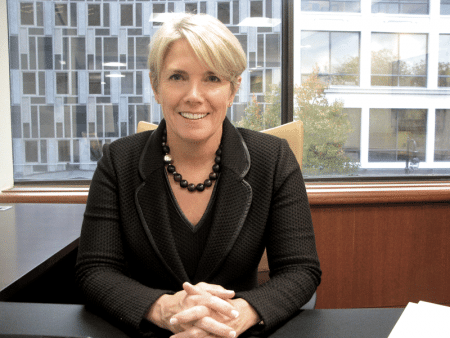
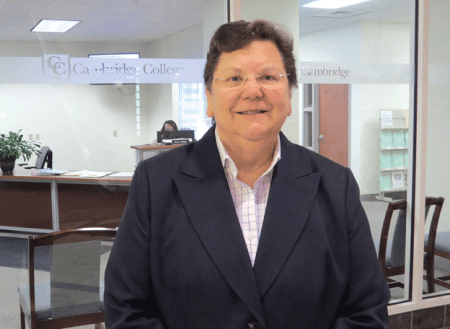
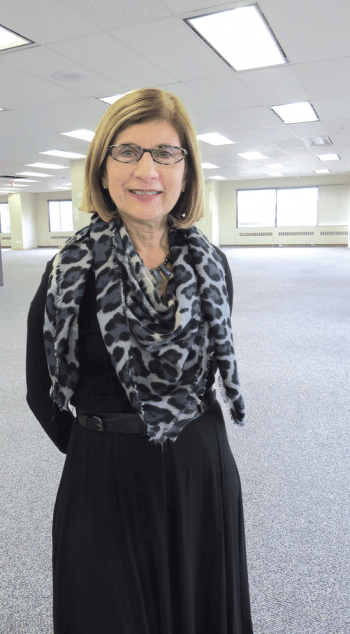






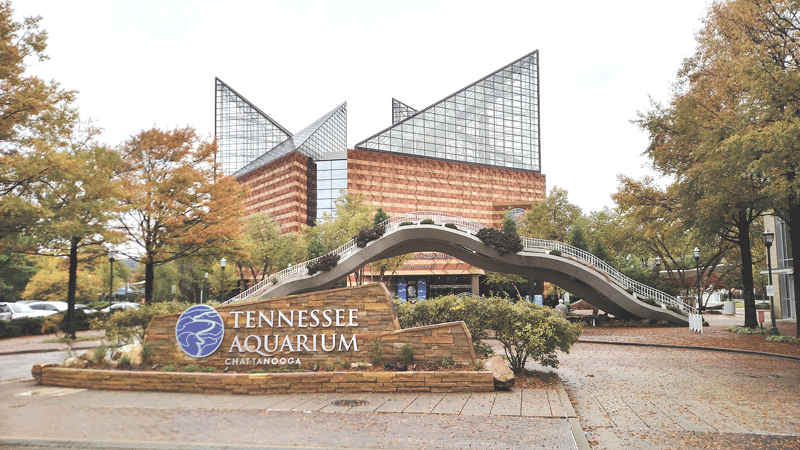







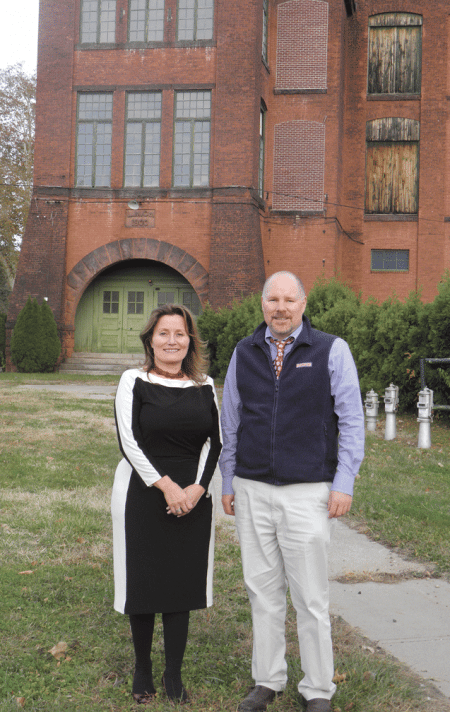
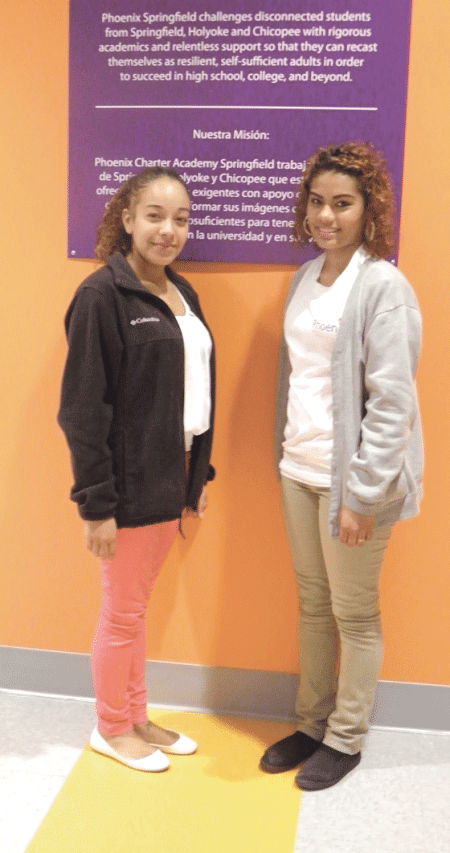
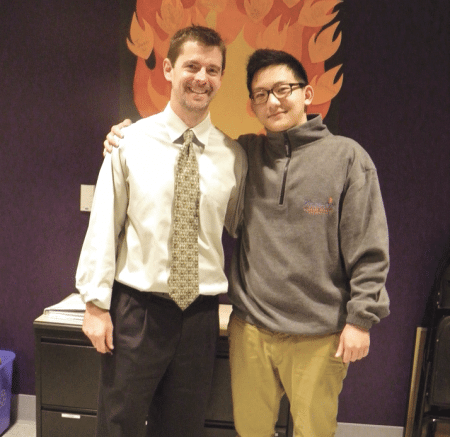



 It’s obvious that taxpayers across the spectrum are affected by these tax provisions. The delayed action on the part of Congress has left taxpayers with questions about how to proceed.
It’s obvious that taxpayers across the spectrum are affected by these tax provisions. The delayed action on the part of Congress has left taxpayers with questions about how to proceed. Also deductible are unreimbursed employee business expenses, tax-return-preparation fees, investment expenses, and certain other miscellaneous itemized deductions that together are in excess of 2% of AGI
Also deductible are unreimbursed employee business expenses, tax-return-preparation fees, investment expenses, and certain other miscellaneous itemized deductions that together are in excess of 2% of AGI
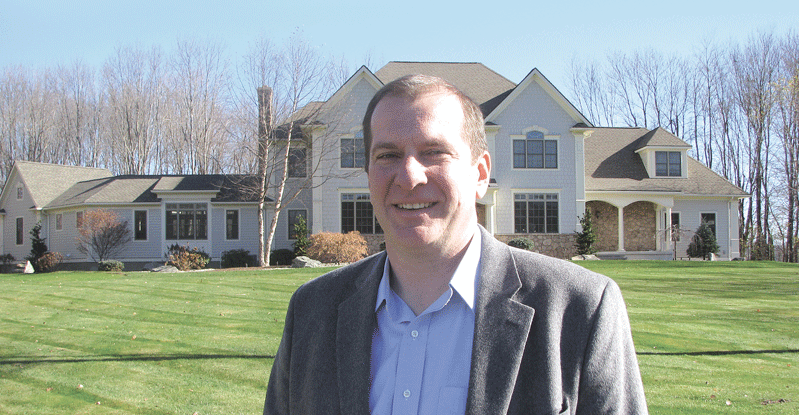



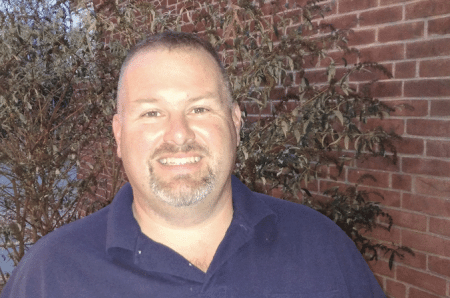
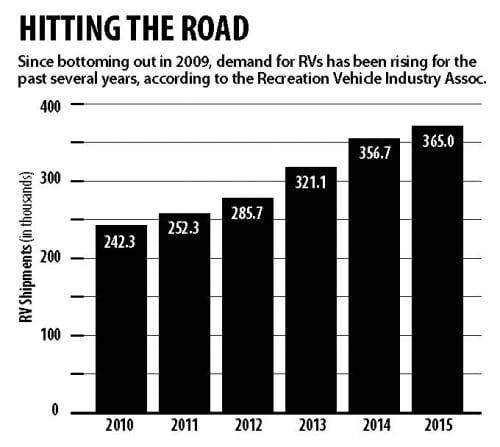 According to the RVIA, manufacturers, recognizing the growing diversity of RV owners, are focused on offering products with an optimal mix of size, amenities, and price, including budget-friendly options like lightweight trailers and smaller, fuel-efficient motorhomes. Technologies such as solar panels and energy-efficient components are showing up on more models as well, to appeal to users with a bent toward going green.
According to the RVIA, manufacturers, recognizing the growing diversity of RV owners, are focused on offering products with an optimal mix of size, amenities, and price, including budget-friendly options like lightweight trailers and smaller, fuel-efficient motorhomes. Technologies such as solar panels and energy-efficient components are showing up on more models as well, to appeal to users with a bent toward going green.


